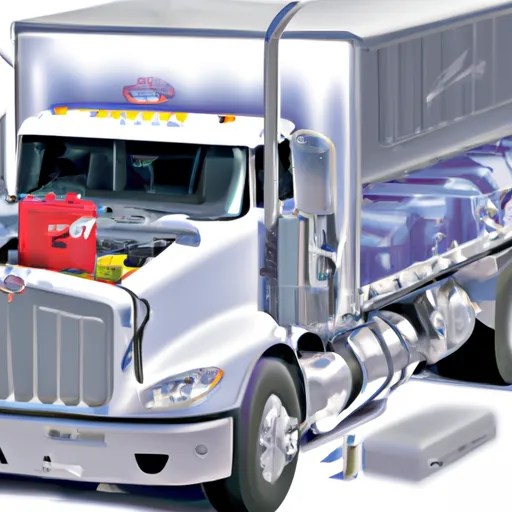
Understanding the Kenworth Coolant Light: Troubleshooting and Maintenance Tips
Introduction
As a Kenworth truck owner, it’s important to understand the various warning lights that may appear on your dashboard, including the coolant light. The coolant light is designed to alert you to potential issues with the coolant system in your truck, which is a crucial component in keeping your engine running smoothly.
In this article, we’ll discuss the importance of understanding the coolant light and its function, as well as common causes of the coolant light turning on. By the end of this article, you’ll have a better understanding of how the coolant system in your Kenworth truck works, and what to do if the coolant light turns on.
Understanding the Coolant System in Kenworth Trucks
Before we dive into troubleshooting the coolant light in your Kenworth truck, it’s important to have a basic understanding of the coolant system and its function. The coolant system in your truck is responsible for regulating the temperature of the engine and preventing it from overheating.
The coolant itself is a mixture of water and antifreeze, and it circulates through the engine to absorb heat and carry it away from the engine block. This helps to maintain a consistent operating temperature and prevent damage to the engine components.
Regular maintenance of the coolant system is crucial to ensure proper performance and prevent costly repairs down the line. This includes checking the coolant level, inspecting for leaks, and flushing and replacing the coolant according to the manufacturer’s recommendations.
Reasons for the Coolant Light to Turn On
If the coolant light in your Kenworth truck turns on, there are several potential reasons for this warning. One of the most common reasons is a low coolant level, which can be caused by a leak in the system or simply evaporation over time. Other reasons for the coolant light turning on may include a malfunctioning thermostat, a faulty coolant temperature sensor, or a clogged radiator.
It’s important to address any issues with the coolant system promptly, as neglecting these issues can lead to engine damage and costly repairs. Symptoms that may indicate a problem with the coolant system include overheating, poor engine performance, or the presence of white exhaust smoke.
In the next chapter, we’ll discuss how to troubleshoot the coolant light and identify the source of the issue.
Troubleshooting the Coolant Light
If the coolant light in your Kenworth truck turns on, the first step is to troubleshoot the system to identify the source of the issue. The first thing to check is the coolant level – if it’s low, this may be the cause of the warning light. You can check the coolant level by looking at the coolant reservoir, which is typically located near the radiator.
If the coolant level is fine, the next step is to inspect the coolant system for leaks. This may involve visually inspecting hoses and connections, as well as pressure testing the system to identify any leaks that may not be visible. Additionally, you may need to check the thermostat, radiator, and coolant temperature sensor to ensure they’re functioning properly.
Once you’ve identified the source of the issue, it’s important to address it promptly to prevent further damage to the engine. Depending on the issue, this may involve replacing a faulty component, repairing a leak, or flushing and replacing the coolant.
In the final chapter, we’ll discuss how to properly maintain the coolant system in your Kenworth truck to prevent issues from occurring in the first place.
Maintaining Your Kenworth Truck’s Coolant System
To prevent issues with the coolant system in your Kenworth truck, it’s important to perform regular maintenance on the system. This includes checking the coolant level regularly and topping it off as needed, as well as inspecting the hoses and connections for any signs of wear or damage.
You should also have the coolant system flushed and replaced according to the manufacturer’s recommendations, which may be every 30,000 miles or every few years, depending on your specific truck and usage. This will help to remove any buildup or contaminants in the system that may be affecting its performance.
Other maintenance tasks to consider include replacing the thermostat and coolant temperature sensor if they’re not functioning properly, as well as checking the radiator for any signs of damage or corrosion. By staying on top of these maintenance tasks, you can help ensure that your Kenworth truck’s coolant system is functioning properly and prevent costly repairs down the line.
Thank you for reading this guide to troubleshooting and maintaining your Kenworth truck’s coolant system. By understanding the function of the coolant light and how to troubleshoot issues with the system, you can help keep your engine running smoothly and avoid any unexpected breakdowns on the road.
For detailed information, you can contact us at torqueusa.com.


